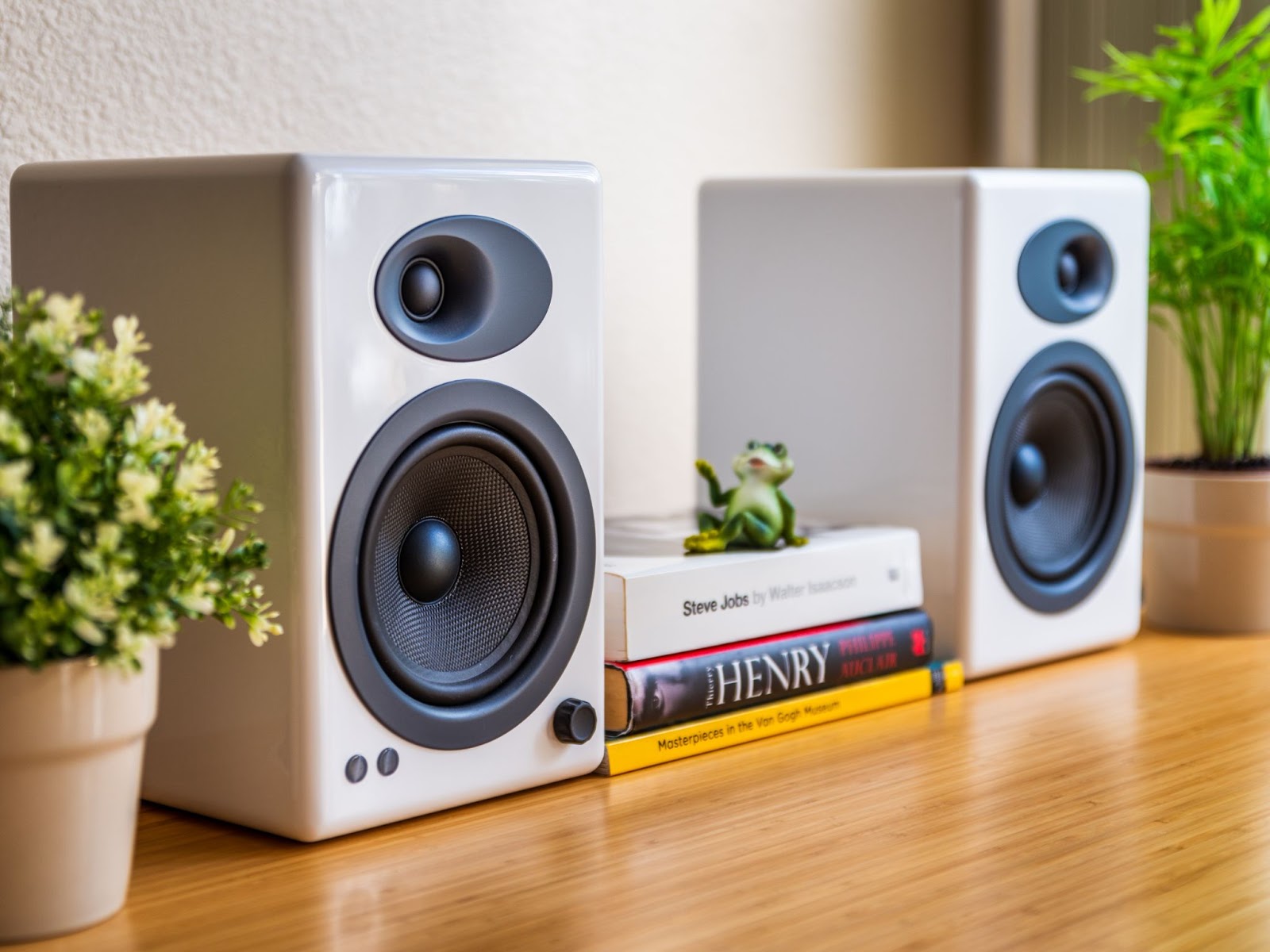Home>Devices & Equipment>Subwoofer>What Does Subwoofer FS Mean


Subwoofer
What Does Subwoofer FS Mean
Published: January 21, 2024
Discover the meaning of Subwoofer FS and how it impacts your audio experience. Uncover the importance of this term for enhancing bass performance.
(Many of the links in this article redirect to a specific reviewed product. Your purchase of these products through affiliate links helps to generate commission for AudioLover.com, at no extra cost. Learn more)
Table of Contents
Introduction
Welcome to the world of subwoofers, where deep bass and immersive audio experiences come to life. If you’re in the market for a subwoofer, you may have come across the term “Subwoofer FS” during your research. But what exactly does it mean? In this article, we’ll delve into the fascinating world of subwoofer FS and uncover its significance in achieving optimal audio performance.
A subwoofer is a speaker specifically designed to reproduce low-frequency sounds, typically ranging from 20Hz to 200Hz. These low frequencies are responsible for adding depth and impact to music, movies, and other audio content. However, not all subwoofers are created equal; they vary in terms of size, power, and features. This is where Subwoofer FS comes into the picture.
FS stands for “Free Air Resonance,” sometimes referred to as “Resonant Frequency.” It is a critical specification that determines the subwoofer’s ability to produce low frequencies accurately and efficiently. In simple terms, FS represents the natural frequency at which a subwoofer vibrates when no external forces are acting upon it.
Understanding Subwoofer FS is important because it directly affects the subwoofer’s performance and compatibility with the audio system. By optimizing the FS, you can ensure that the subwoofer integrates seamlessly with the other speakers, delivering a cohesive and balanced audio output.
Definition of Subwoofer FS
Subwoofer FS, or Free Air Resonance, is a parameter that indicates the natural resonant frequency of a subwoofer. It is typically measured in Hertz (Hz) and represents the frequency at which the subwoofer vibrates the most when it is not enclosed in a box or cabinet. This resonance occurs when the subwoofer’s moving parts, such as the cone or diaphragm, are in perfect harmony with the air surrounding them.
Subwoofers are designed to produce low-frequency sounds, which require larger drivers and more power compared to other speakers. The FS specification helps determine the subwoofer’s efficiency in reproducing these low frequencies accurately and effectively.
When a subwoofer is tested in a free-air environment (without any enclosure), it is subjected to a range of frequencies, and its response is measured. The frequency at which the subwoofer exhibits the highest vibration or movement amplitude is its Free Air Resonance (FS). This resonance point defines the subwoofer’s optimal frequency range and performance capabilities.
In most cases, subwoofers are designed to work within a specific frequency range. The FS specification is crucial because it helps in selecting the appropriate type and size of subwoofer that will complement the rest of the audio system and deliver the desired bass response.
Subwoofer FS is closely related to other important parameters like the subwoofer’s QTS (Total Q Factor), VAS (Equivalent Compliance Volume), and CMS (Mechanical Compliance). These parameters collectively define the subwoofer’s behavior and determine its compatibility with different enclosure types and audio systems.
While subwoofer FS is an important specification to consider, it should not be the sole factor when choosing a subwoofer. Other factors like power handling, driver size, enclosure type, and room size also play a significant role in achieving the desired audio performance.
The Importance of Subwoofer FS
Subwoofer FS plays a crucial role in determining the overall performance and compatibility of a subwoofer within an audio setup. Here’s why understanding and considering the FS specification is essential:
Accurate Low-Frequency Reproduction: The FS of a subwoofer indicates its resonant frequency, which is the frequency at which it naturally vibrates. By selecting a subwoofer with an FS that matches the desired low-frequency range, you can ensure accurate and precise reproduction of bass frequencies in music, movies, and other audio content. This leads to a more immersive and enjoyable listening experience.
Enhanced Integration with Audio System: When all the speakers in an audio system work harmoniously, the result is a balanced and cohesive soundstage. By selecting a subwoofer with an FS that complements the other speakers’ characteristics, you can achieve seamless integration and avoid any frequency gaps or inconsistencies in the audio reproduction.
Optimized Enclosure Design: The FS specification also influences the choice of enclosure design for the subwoofer. Different enclosure types, such as sealed, ported, or bandpass, have varying effects on the subwoofer’s low-frequency response. Matching the subwoofer’s FS with the appropriate enclosure design helps maximize its efficiency, control, and output within the desired frequency range.
Better Power Handling: A subwoofer’s FS is closely related to its power handling capabilities. Subwoofers with a lower FS tend to handle more power and produce deeper bass frequencies with greater clarity. By selecting a subwoofer with the right FS for your preferences and system requirements, you can ensure optimum power utilization and prevent overloading or distortion.
Room Acoustics Considerations: The FS of a subwoofer should also be taken into account when considering the characteristics of your listening space. Large rooms or spaces with high ceilings may benefit from subwoofers with lower FS values, as they can provide greater bass impact and fill the room more effectively. Conversely, smaller rooms or spaces with limited ventilation may require subwoofers with higher FS values to avoid overpowering the space.
By understanding the importance of Subwoofer FS and considering it alongside other specifications and system requirements, you can make an informed decision when choosing a subwoofer that meets your audio needs and delivers an exceptional bass performance.
Factors that Affect Subwoofer FS
A subwoofer’s FS is influenced by various factors that can impact its performance and characteristics. Understanding these factors can help in selecting a subwoofer that aligns with your audio needs and system requirements. Here are the key factors that affect Subwoofer FS:
Driver Design: The design of the subwoofer’s driver, including the cone material, surround material, and voice coil design, can directly impact its FS. Different driver designs have varying mass, stiffness, and damping characteristics, which ultimately affect the resonant frequency of the subwoofer.
Mass of the Moving Parts: The mass of the subwoofer’s moving parts, such as the cone, voice coil, and spider, can influence its FS. Subwoofers with lighter moving parts tend to have higher FS values, while subwoofers with heavier moving parts tend to have lower FS values. This mass determines how easily the driver can respond to different frequencies.
Suspension Compliance: The compliance of the subwoofer’s suspension system, including the surround and spider, affects its FS. A more compliant suspension allows for greater cone excursion and can result in a lower FS. On the other hand, a stiffer suspension limits cone movement and can lead to a higher FS.
Magnet Strength: The strength of the magnet assembly in a subwoofer can impact its FS. Subwoofers with stronger magnets tend to have lower FS values as they provide more force to drive the cone at lower frequencies. However, the magnet strength should be balanced with other factors to ensure optimal performance.
Voice Coil Design: The design of the voice coil in a subwoofer, including its diameter, length, and wire gauge, can affect the FS. Subwoofers with larger voice coils may have lower FS values, while those with smaller voice coils may have higher FS values. The voice coil design influences the subwoofer’s ability to handle power and accurately reproduce low frequencies.
Enclosure Type: The type of enclosure used with the subwoofer can impact its FS. Different enclosure types, such as sealed, ported, or bandpass, have different effects on the subwoofer’s resonant frequency. The design and dimensions of the enclosure can interact with the subwoofer’s FS and affect its bass response and overall performance.
Environmental Factors: Environmental factors, such as temperature and humidity, can also affect the subwoofer’s FS to some extent. Changes in temperature can cause variations in the subwoofer’s resonant frequency, impacting its performance. Therefore, it is important to consider the operating conditions and environmental factors when selecting a subwoofer.
By understanding and considering these factors, you can make informed decisions when choosing a subwoofer that meets your specific audio requirements and delivers the desired bass performance.
How to Determine the Ideal Subwoofer FS
Determining the ideal Subwoofer FS involves considering various factors, including personal preferences, system requirements, and listening environment. Here are some steps to help you determine the ideal Subwoofer FS:
1. Define Your Audio Goals: Start by clearly defining your audio goals and expectations. Are you looking for deep and thunderous bass or more balanced and accurate low-frequency reproduction? Understanding your preferences and the type of sound you want to achieve will guide your decision-making process.
2. Assess Your Audio System: Evaluate your existing audio system, including the main speakers and amplifier. Take note of their frequency response and power handling capabilities. This information will help ensure that the subwoofer’s FS aligns with the rest of the system, ensuring compatibility and a seamless integration of frequencies.
3. Consider Your Listening Environment: Take into account the physical characteristics of your listening environment. The size of the room, the shape, and the presence of any acoustic treatments or furniture can affect the bass response. Larger rooms may require subwoofers with lower FS values to fill the space, while smaller rooms may benefit from higher FS values to prevent overwhelming the area.
4. Research Available Subwoofer Options: Research different subwoofer models and their specifications, including the FS. Look for subwoofers that have an FS that aligns with your audio goals, system requirements, and listening environment. Pay attention to other specifications like power handling, driver size, and enclosure type to ensure a balanced and optimized system.
5. Listen to Subwoofers: Whenever possible, listen to the subwoofers you are considering. Visit audio stores or attend audio equipment demonstrations to get a sense of how different subwoofers sound. Pay attention to their bass response and the impact on your overall listening experience. This firsthand experience will help you make a more informed decision.
6. Seek Expert Advice: If you are unsure about selecting the ideal Subwoofer FS for your needs, consider seeking advice from audio experts or professionals. They can help analyze your specific requirements and provide guidance based on their experience and knowledge.
By following these steps and considering your audio goals, system requirements, listening environment, and professional advice, you can determine the ideal Subwoofer FS that suits your needs and enhances your audio experience.
Conclusion
Understanding the significance of Subwoofer FS is crucial in selecting the right subwoofer for your audio system. The FS specification indicates the natural resonant frequency of a subwoofer and plays a vital role in achieving accurate low-frequency reproduction and seamless integration within the audio system.
By considering factors such as driver design, moving part mass, suspension compliance, magnet strength, voice coil design, and enclosure type, you can determine the ideal Subwoofer FS that aligns with your audio goals and system requirements.
It is important to remember that Subwoofer FS is just one aspect to consider when choosing a subwoofer, alongside other specifications like power handling, enclosure design, and room acoustics. Striking a balance between the subwoofer’s FS and other factors is crucial to achieving optimal audio performance.
By following the steps outlined in this article, including defining your audio goals, assessing your audio system, considering your listening environment, researching available options, and seeking expert advice, you can make an informed decision to ensure that the subwoofer you choose enhances your audio experience and delivers the desired bass performance.
With the right subwoofer and an optimized Subwoofer FS, you can immerse yourself in deep, powerful bass, bringing your music, movies, and games to life like never before.











